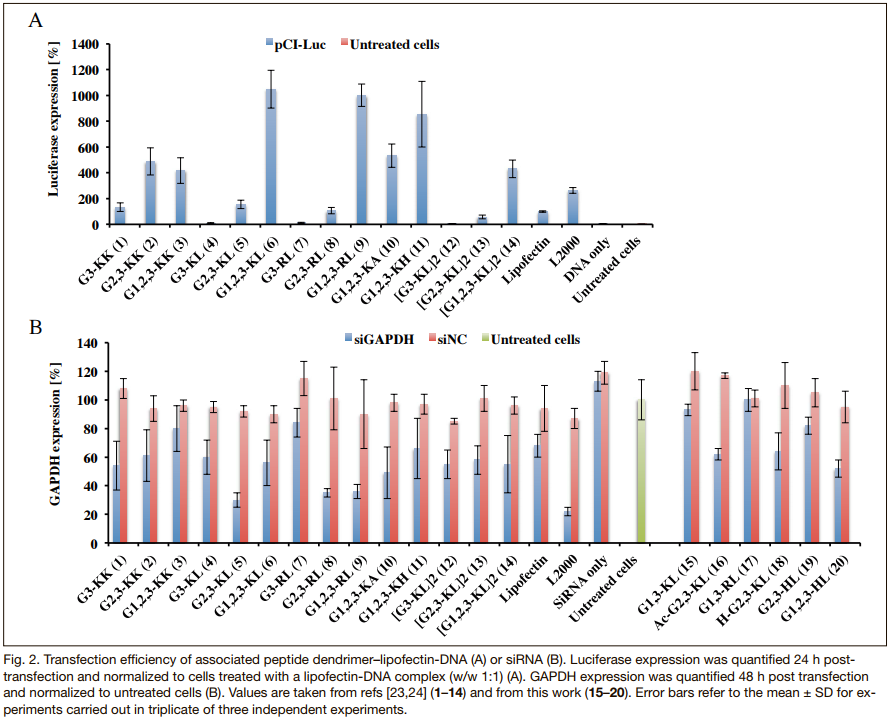Peptide Dendrimer–Lipid Conjugates as DNA and siRNA Transfection Reagents: Role of Charge Distribution Across Generations

The paper Peptide Dendrimer–Lipid Conjugates as DNA and siRNA Transfection Reagents: Role of Charge Distribution Across Generations is now published in the journal Chimia.
Transfection reagents are used to deliver DNA and siRNA into cells to achieve genetic manipulations, and may ultimately enable nonviral gene therapy. Progress in transfection reagents is limited by the fact that such reagents cannot be easily optimized due to their polymeric nature and/or difficult synthesis. We have developed a new class of well-defined and easily modifiable transfection reagents in the form of peptide dendrimers. These dendrimers self-assemble with DNA or siRNA and lipofectin to form nanoparticles which efficiently enter mammalian cells and liberate their nucleic acid cargo. By systematically modifying the amino acid sequence of our dendrimers we have found that their transfection efficiency depends on the distribution of positive charges and hydrophobic residues across the dendrimer branches. Positive charges present in all three generations lead to efficient DNA delivery, whereas siRNA delivery requires charges in the outer two generations combined with a hydrophobic dendrimer core.
Author(s): Marc Heitz, Albert Kwok, Gabriela A. Eggimann, Florian Hollfelder, Tamis Darbre, and Jean-Louis Reymond